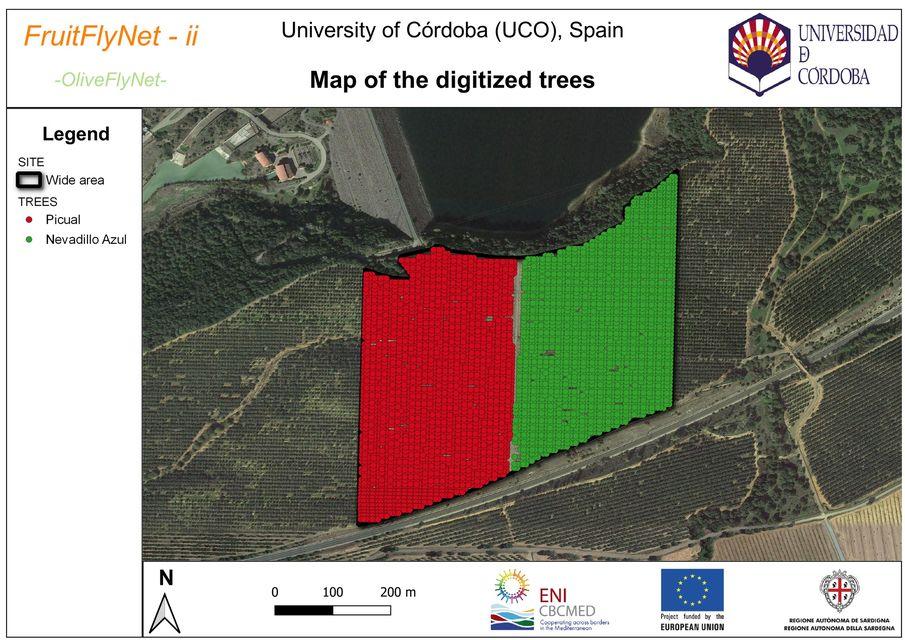FruitFlyNet-ii in Spain puts Big Data analysis and Artificial Intelligent at farmers' disposal

FruitFlyNet-ii in Spain has completed another phase of the project thanks to ETSIAM - Escuela Técnica Superior de Ingeniería Agrónomica y de Montes of University of Cordoba (UCO) with the digitization of field data at the experimental site. Throughout last year, the team collected all the georeferenced data (every item has its own geographical coordinates) about trees, climatic sensors (temperature, relative humidity, wind speed, and rainfall), electronic traps, land uses, and protected zones. All the information that describes the characteristics of the olive orchard.
The data was organized in a geodatabase and maps were made for visual recognition of the elements to feed a Decision Support System (DSS) that supports the data-driven decision of stakeholders for the control of the olive fly. Using modern technics like Big Data analysis and Artificial Intelligent, with suitable algorithms, raw data was transformed to valuable information to help farmers and agricultural technicians in their decision-making on olive fly control. This control needs to know the optimized moment to do it, the best method to use, and the adequate place to apply it.
During last month, the University of Cordoba's team had made several visits at the the wide-area site of the project located at Alcolea (Cordoba, Spain). The main objective was to revise the situation of the trees after the harvest of the olives and the completion of the tests to verify any changes in the field and to collect new data, observe if there have been changes such as lack of trees between rows, their replacement and updating those already collected in other visits.

This will complement the geodatabase and the digitalization of the area and will contribute to maintaining an up-to-date geodatabase. All data collected and digitized will allow to optimize the placement of electronic traps and perform the most optimal monitoring and control against the olive fruit fly. It will also support farmers and technicians in making decisions and acting at the most appropriate time.
The research team does not intend to replace the knowledge and expertise of the farmers and agricultural technicians. The goal is to provide them valuable information for having their own data-driving decision to improve the moment and control method, with less cost and environmental impact. This is achieved by lowering field visits and travels, optimized use of the spraying, and the moment of their use, with just-in-time information. Also, this system allows keeping the historical information and practices to ensure quality control protocols.









